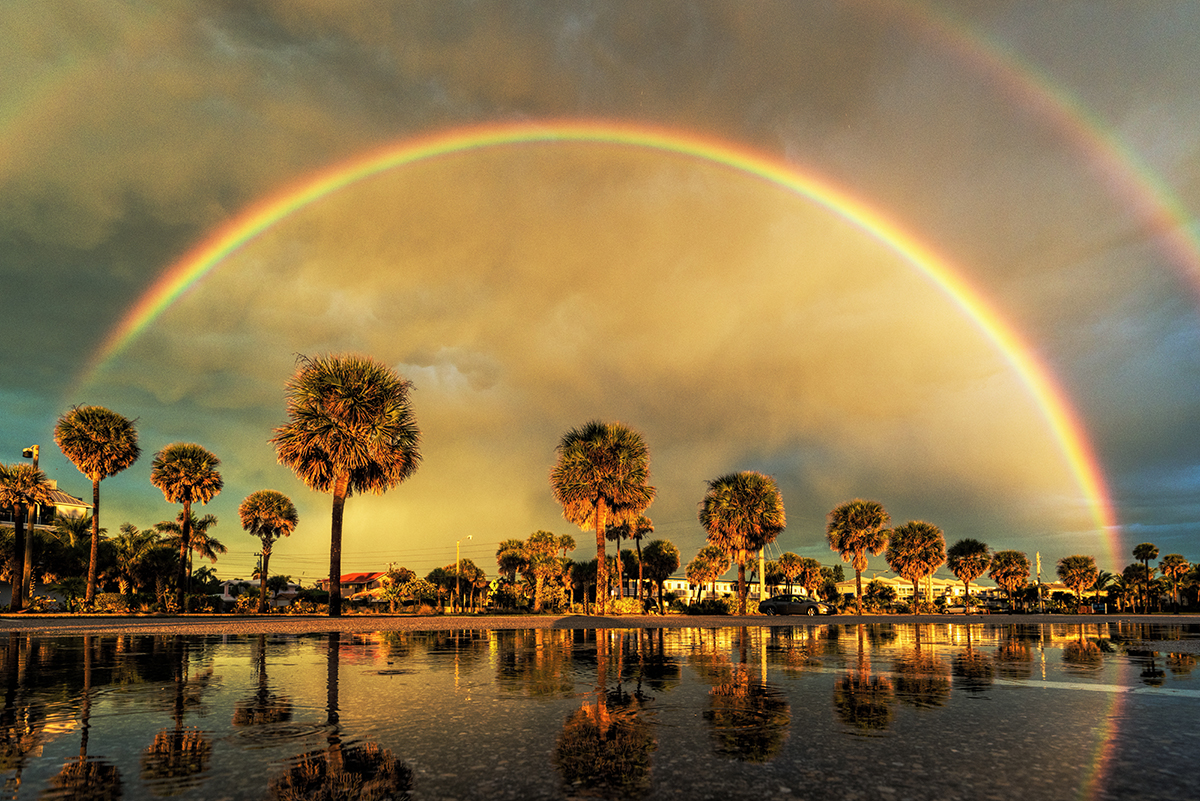Chasing the Storm
Landscape photographer Damon Powers uses his Tamron 17-35mm F/2.8 Di and 100-400mm Di VC lenses to capture extreme weather and its often-gorgeous aftermath.
More Photo Tips | Video Gallery | Photo Gallery | Enewsletter sign-up
By Jenn Gidman
Images By Damon Powers
When Damon Powers first took a photography class in high school, he started out strictly in film, continuing along that route all through college as he studied social work and sociology. Taking pictures remained a hobby even after he got out of school, until Damon realized he wasn't feeling connected to his career and dove more fully into photography. In 2015, he bought his first basic point-and-shoot camera and started experimenting with digital photography, which is when he stumbled upon the path that would lead him to where he is today.
"I started taking photos of all kinds of things, trying to find something of interest that a lot of other people don't really photograph as much," he says. "One night there was a storm in my city and I decided to try to capture lightning. I took a pretty good photo of lightning over my city and it made the local news. I was instantly hooked. Ever since that day, I've been deep into weather photography, mostly shooting here around Sarasota, though I do travel all around South Florida."
Damon's photographic goal is a simple one: to take pictures that grab your attention. "Especially with social media these days, people are scrolling through thousands of images a week," he says. "I'm just trying to stand out more than the next person, with high-contrast, in-your-face images, often with awesome storm structures. When I started on Instagram in 2015, I had 200 followers. I've built it to over 27,000 today, all naturally."
The two Tamron lenses that have become indispensable to Damon's weather-based images are the Tamron 17-35mm F/2.8 Di OSD and Tamron 100-400mm Di VC. "I was sold on the 17-35 the minute it came out, because it's so easy to walk around with and has terrific range," he says. "I also appreciate its moisture-resistant construction, for obvious reasons. As for the 100-400, that lens simply expands what I can do with its versatile focal-length range. My sunset photos, for the most part, are usually taken handheld with that lens with the Vibration Compensation (VC) feature turned on."
Damon heads out seven days a week, seeking dramatic skies with plenty of cloud cover and, hopefully, a storm system or two. "Sometimes I'll be out till sunrise, depending on the weather," he says. "It's often a spontaneous type of session, however, because I never really know with complete certainty when and where a storm will pop up."
He'll seek out storm fronts, vying for eye-catching shots of skies teeming with clouds and, if he's lucky, a lightning bolt or two, like the image that initially brought him some regional renown. "The Tamron lenses help me effectively capture these types of impromptu images," he says. "Take this lightning photo I took at Bradenton Beach in Manatee County, off the Florida Gulf Coast. The storm was about 40 miles offshore, but with that Tamron 100-400, I was able to make it appear a lot closer."

Click image to view larger
The storms themselves aren't the only draw for Damon. After the clouds have emptied, he's often able to find rain-soaked scenes that offer ample photo ops. "I especially like looking for puddles that reflect the sky and surrounding objects," he says. "In Lido Key, there's a parking lot that floods every time there's a steady rain, creating a neat mirror-like effect. And because the beach is usually deserted right after a rain, the parking lot is usually empty. That's how I captured this double rainbow shot you see here—everyone else was photographing the sunset, but I turned around and caught this. The same for the next sunset reflection you see here. I shot that one handheld, with my camera way down low. To keep the camera dry, I stood it on the toe of my shoe."
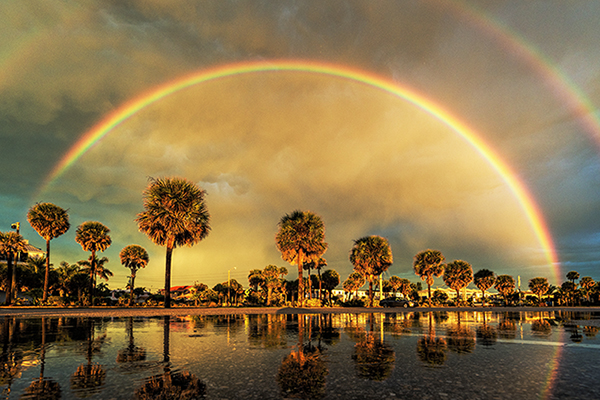
Click image to view larger
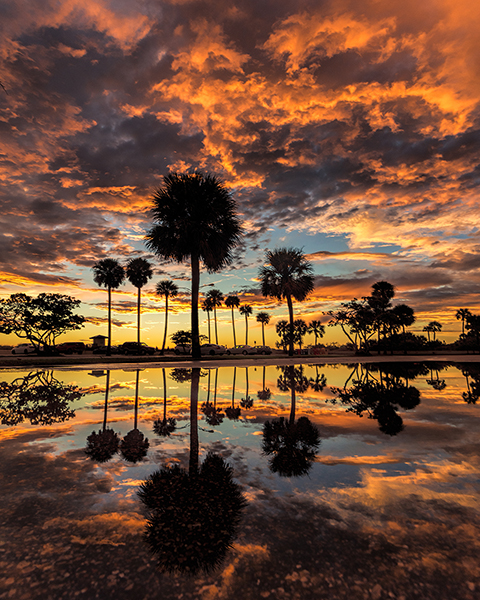
Click image to view larger
Because winter skies in Florida aren't terribly dramatic, Damon started searching for a way to keep him entertained behind the lens during the dry season. That's when he settled on star trails. "I watched a YouTube tutorial by photographer Tony Northrup and started using an image-stacking software called StarStaX," he says. "I began traveling all over Florida, photographing star trails over all types of cool subjects. I shoot 30-second exposures and lock my shutter cable down so my camera just keeps taking photos, with no delay."
Damon had always wanted to head out to Sanibel Island to shoot star trails over the lighthouse there, so that's what he did as a birthday treat for himself last year. "It's often hard here in Florida to capture star trails because of all the light pollution, but Sanibel Island is in a really dark area, sticking out somewhat awkwardly off the Florida coast," he says. "There was a full moon behind me, which is why the ground and palm tree are all lit up like this. I just pointed my camera at the North Star and let my camera go to work for about an hour."

Click image to view larger
One of the ways you can vary your star trail photos is to change your focal point. "In the Sanibel image, I was pointing my camera at the North Star, which produced that circular effect," Damon explains. "In this next shot taken at Honeymoon Island State Park, which has the unusual feature of swing benches on the beach, I approached it a little differently: I pointed more toward the west to get that straight up-and-down effect, though you can see the trails start to bow just a bit with the rotation of the Earth. I was out there for two hours for this one, but because it was in the low 40s that night, I waited in my truck to stay warm after I'd set my camera up to do what I wanted it to do."
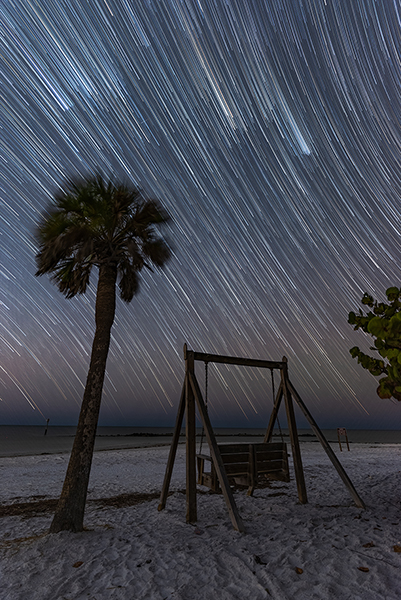
Click image to view larger
Damon's post-processing M.O. is mostly slight tweaks in Lightroom. "I love that I can go anywhere with my MacBook Pro and edit with it—it's incredible," he says. "For these two sunset shots taken at Lido Key, I only fiddled with the vibrance in Lightroom, not the saturation; the colors you see are more or less the colors I saw. We get some really strong cold fronts here in Florida in the winter, which bring dramatic sunsets."
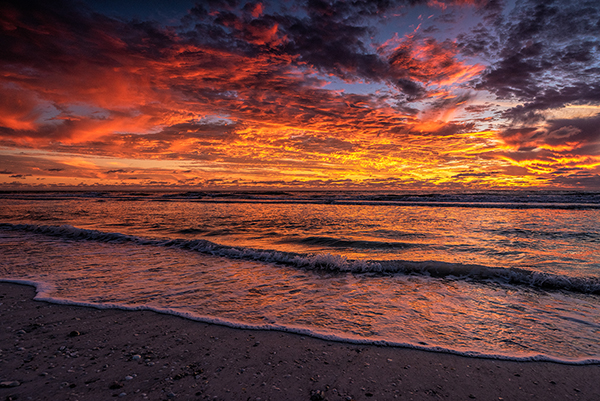
Click image to view larger
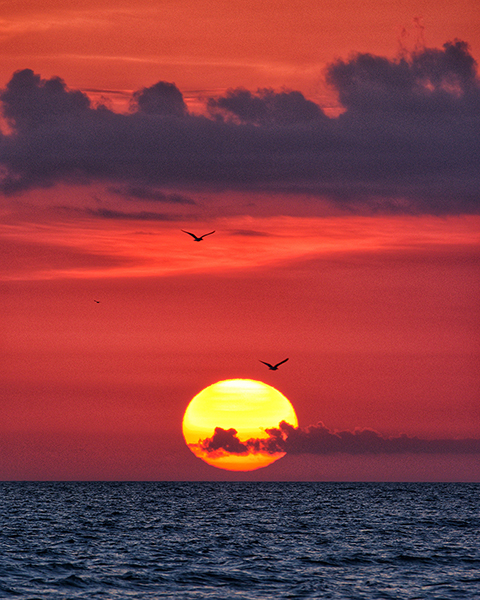
Click image to view larger
As any landscape photographer knows, each picture of the same landscape is different, either because of various perspectives or angles or because the landscape just changes over time—making the photographer a documentarian of sorts, capturing elements that may never be seen again. "Beer Can Island, which is at the very north end of Longboat Key, is a spectacular site loaded with driftwood, which isn't that common on the Gulf Coast," Damon explains. "This shot of the tree sticking out of the water was handheld. I was wading in the water, waiting for the clouds to line up the way I wanted them to. That tree, however, is no longer there. Hurricane Michael took it out, so this may be one of the last photos anyone ever took of it."
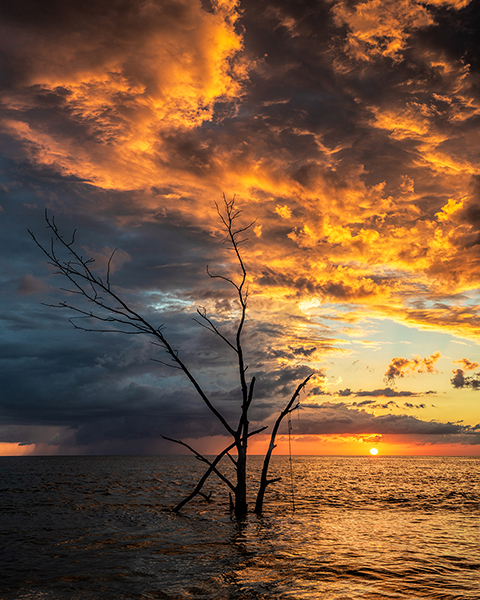
Click image to view larger
To see more of Damon Powers' work, go to http://damonpowers.com.
More Photo Tips | Watch Videos | Learn More About Tamron Lenses | Photo Gallery
